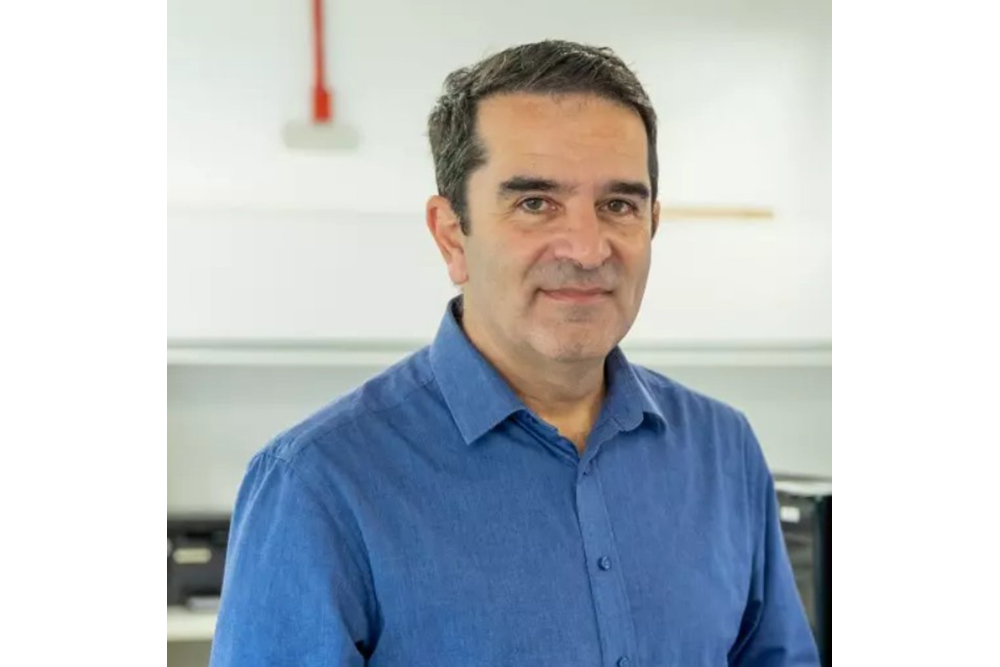
[Image above] Durability enhancement from hafnium oxide/silicate glass formation in HfB2–SiC coated carbon/carbon composites. Credit: Ren et al., International Journal of Applied Ceramic Technology
As new technologies for energy, space exploration, and transportation push the limits of science and engineering higher and higher, researchers for ultrahigh-temperature ceramics (UHTCs) are rising to the challenge.
UHTCs are designed to withstand the chemical and mechanical stresses of high temperatures that can exceed 2,000°C, high doses of radiation within space and nuclear reactors, and other environmental extremes. The articles in this month’s ACT @ 20 collection explore various aspects surrounding the fabrication and use of UHTCs.
Withstanding extreme environments requires UHTCs to have low reactivity. This requirement makes them difficult to sinter, so using traditional sintering methods is both time consuming and expensive. Following on from last month’s ACT @ 20 topic, this month’s articles by Bellosi et al. and Ren et al. explore spark plasma sintering (SPS) of hafnium and zirconium boride-based ceramic matrix composites (CMCs).
In the early work by Bellosi, the authors were able to sinter the materials to high densities in less than 30 minutes. The microstructure and properties of the sintered UHTC CMCs were equal or superior to the same materials sintered by hot pressing, which took up to three hours to achieve high densities.
In Ren, HFB2-SiC composites were reaction-coated onto carbon-carbon composite substrates and compared to SiC coatings. Both were prepared by SPS and hot pressing, with similar time savings by SPS. After the samples were oxidized at 1,500°C, the SiC coating offered minimal protection while the UHTC composite coating showed very little mass loss over the 120-hour test period. The authors attributed the superior performance to formation of hafnium-oxide glasses, which both prevented oxygen migration into the specimens and provided crack deflection points to retain stability.
The application of UHTCs often requires bonding to metals and other materials. Singh and Asthana performed a thorough investigation of bonding multiple ZrB2-based CMCs to copper-clad molybdenum using commercially available brazing compounds. Along with direct measurements, the authors used models for thermal strains and thermal conductivity. Among the findings were effects of copper layer thickness on thermal strains and improved thermal conductivity of the bonded composites. They discuss the trade-offs associated with the material and processing parameters that one must consider in light of the desired application of the UHTC CMCs.
The articles by Dubois et al. and Sun et al. explore a relatively new class of ceramics called MAX phases. MAX phases have the general composition of Mn+1AXn, where M is a transition metal, A is a group 3 or group 4 metal or metalloid, and X is carbon or nitrogen. MAX phases combine the high temperature resistance of ceramics with metal-like mechanical, thermal, and electrical performance.
Dubois performed compositional and structural studies of titanium tin aluminum carbides – Ti (SnAl)C – sintered via hot pressing. While few starting compositions resulted in phase-pure materials, the results were sufficient to measure structural and mechanical properties. They found that as aluminum content increased, the lattice parameters a and c decreased (though the c/a ratios increased) and coordination around the carbon atoms became distorted. Furthermore, hardness and Young’s modulus increased.
Sun explored the use of SPS on a wide range of MAX phases, varying the chemical makeup (titanium, chromium, aluminum, gallium, and nitrogen), MAX ratios (3/2 and 2/1), and starting material compositions and particle sizes. The authors describe a plethora of findings. For example, they found that less expensive, coarser titanium powder can produce high quality MAX phases, though at higher processing temperatures than the finer titanium. Some compounds could be formed from elemental starting materials while others required compounds, such as titanium carbide. Further, they explored solid solutions and composites for specific applications, such as (CrV)2AlC to reduce the coefficient of thermal expansion and TiC-Ti3SiC2 as a substitute for tungsten carbide.
Read more about these advances in this month’s ACT @ 20 articles.
Articles for Ultrahigh-temperature ceramics
Author
Jonathon Foreman
Spotlight Categories
- Journal and Bulletin Updates
Related Posts
Volunteer spotlight: Dachamir Hotza
October 16, 2025


